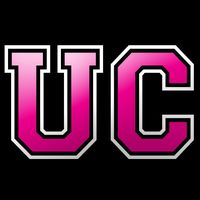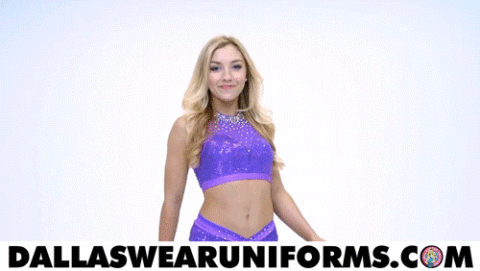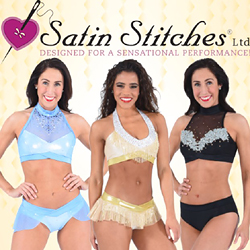A Super Bowl Minus the Pompoms
By John Branch
New York Times
February 4, 2011
DALLAS — A substantial wing of the Dallas Cowboys’ suburban headquarters is devoted to the Dallas Cowboys Cheerleaders. On Thursday afternoon, in an immense dance studio, members of the world’s most famous cheer squad rehearsed for one of their dozens of appearances surrounding the Super Bowl this week.
“We have never been this busy,” said Kelli McGonagill Finglass, a Cowboys cheerleader in the 1980s and the director since 1991.

But Super Bowl XLV itself represents an unusual happenstance in the coupled worlds of football and cheerleading. In a state famous for Friday Night Lights and the Dallas Cowboys Cheerleaders, where Lawrence Herkimer practically invented the modern cheerleader (and did patent the pompom), there will be no cheerleaders at the biggest football game of them all.
The Packers and Steelers are two of the six N.F.L. teams without professional cheerleading squads. Sunday’s game is believed to be the first time in more than 40 years that no team cheerleaders will be on the sideline of the Super Bowl.
It will probably be the first and last time that no cheerleaders will be on the sideline for a football game at Cowboys Stadium, too, if not anywhere else in Texas.
This is a place where it is often said that parents wish their boys to become quarterbacks and their girls to become cheerleaders. That a cheerleader-less Super Bowl is being played in Texas, at the home of the Dallas Cowboys Cheerleaders, is seen here as the ultimate irony.
“In Texas, if you have football players on the field and you don’t have cheerleaders on the sideline?” Denise Martin, founder of Texas Cheerleader magazine, asked rhetorically. “Where there is football in Texas, there are cheerleaders.”
Not this time.
Both the Packers and Steelers have had cheerleading squads in the past. The Packers, in fact, say that they had the N.F.L.’s first, in 1931. But the franchises now believe that modern-day professional cheerleaders — dance squads, really — are not a good fit for their teams or their markets.
The New York Giants, Chicago Bears, Detroit Lions and Cleveland Browns also do not have professional cheerleader squads.
They all stand in stark relief to the Dallas Cowboys and their famed cheerleaders, a profit maker for the franchise (the team will not reveal the numbers) thanks to merchandise sales, appearance fees and the millions of mouse clicks that bring fans to the team’s Web site. It is nearly impossible to imagine the Cowboys without the cheerleaders.
“We’re too strongly branded together,” Finglass said.
By doing without cheerleaders, however, the Steelers and Packers send a quieter message about how they view themselves and want to be seen by others.
The Packers disbanded their last professional cheer-and-dance squad in 1988, after a poll of fans found strong opposition and indifference. The team came to see the dancers as incongruous to the franchise’s focus on football history, from founder Curly Lambeau to coach Vince Lombardi and beyond.
For the past 20 years, there have been cheerleaders at Lambeau Field — co-ed squads borrowed from the University of Wisconsin-Green Bay and nearby St. Norbert College. The Packers did not invite them to the Super Bowl.
“We think our nod to tradition and a collegiate feel at games probably adds to our brand value — for the opposite reason having cheerleaders may add to that of the Cowboys,”‘ said Jason Wied, Green Bay’s vice president for administration.
Dressed in Packers regalia, the cheerleading men hoist megaphones and wave giant flags. The women wear traditional sweaters and skirts. They start chants, build pyramids and hold signs, just as they do for their college teams on other days of the week.

“Most other teams are more dancers, not cheerleaders,” said Ann Rodrian, the University of Wisconsin-Green Bay cheerleading coach whose squad has worked Packers’ home games for 20 years. “They don’t usually show us because my girls have all their clothes on.”
The Steelerettes cheered in Pittsburgh from 1961 to 1969. They were women from Robert Morris Junior College (now Robert Morris University) brought to help a struggling franchise sell tickets and attract attention.
“We knew from the beginning that the Chief didn’t really want us down on the field,” said the Steelerette Dianne Feazell Rossini, referring to the late Steelers founder Art Rooney. “Mr. Rooney wasn’t really crazy about it, but he kind of tolerated it for a time.”
She remembers the game against the Bears at Forbes Field after the 1963 assassination of President Kennedy. Given the somber mood, the Steelerettes were asked to stay seated on the sideline and not cheer. To fight the chill, Rooney ordered that they be given Steelers jackets, Rossini said. Hers now resides in a Pittsburgh museum, along with her Steelerettes uniform.
The Steelers make little mention of the Steelerettes. The team this week declined to discuss its reasons for not having cheerleaders.
“It’s simply an organizational decision,” the team spokesman Dave Lockett wrote in an e-mail message.
Yet it has been at least 40 years, however, since the Super Bowl was played without cheerleaders. The precise game is hard to determine because the N.F.L. and the Pro Football Hall of Fame have no records of whether cheerleading squads accompanied teams to various Super Bowls.
But one man has chronicled the games like no other. Steve Sabol is president of NFL Films, founded in 1964 by his father, Ed. (Ed Sabol is a finalist this year for the Hall of Fame, whose 2011 class will be announced on Saturday.) Steve Sabol was assigned to film off-field action on the sideline for the first Super Bowl in January 1967, between Green Bay and Kansas City.
“I don’t remember ever seeing any Packers cheerleaders or Chiefs cheerleaders on the sideline,” Sabol said. “That’s not to say they weren’t there, but it was my job to shoot anything like that. And I never saw any.”
Sabol vaguely recalls cheerleaders at Super Bowl II between Green Bay and Oakland, perhaps from the Raiders or a local squad from Miami, where the game was held, unaffiliated with either team.
“Super Bowl III, between the Jets and Colts, I know the Colts had cheerleaders,” Sabol said. And both the Chiefs and Minnesota Vikings had them at Super Bowl IV, he said. Every Super Bowl has had at least once squad since.
That streak will end on Sunday.
“It’s weird, for this site, not to have cheerleaders,” Sabol said. “Because the Dallas cheerleaders are the most famous cheerleaders in the N.F.L.”
Their studio at Cowboys’ headquarters is about 100 feet long and 40 feet wide, with a hardwood floor and mirrors lining two sides. Another wall holds life-sized posters of the cheerleaders, in their familiar uniform of cowboy boots, short white shorts, low-cut blue blouses and fringed vests.
A large banner hangs as a sort of cheerleaders’ creed; “Promise to look at the sunny side of everything and make your optimism come true,” one pronouncement reads. A scale stands at the door. An adjacent office is filled with posters of the cheerleaders in bikinis, shots used for the squad’s popular calendar.
On Thursday afternoon, 15 cheerleaders from the team’s “show group,” an elite part of the 34-member squad, practiced a routine with a hip-hop dance troupe. They will perform together at a party on Saturday night at the House of Blues.
On Sunday, the Dallas Cowboys Cheerleaders will make several appearances outside Cowboys Stadium, performing for fans and sponsors before the game.
But inside their home, something unusual will occur. The hubbub of the Super Bowl sideline will not include cheerleaders.
In Texas, of all places.



